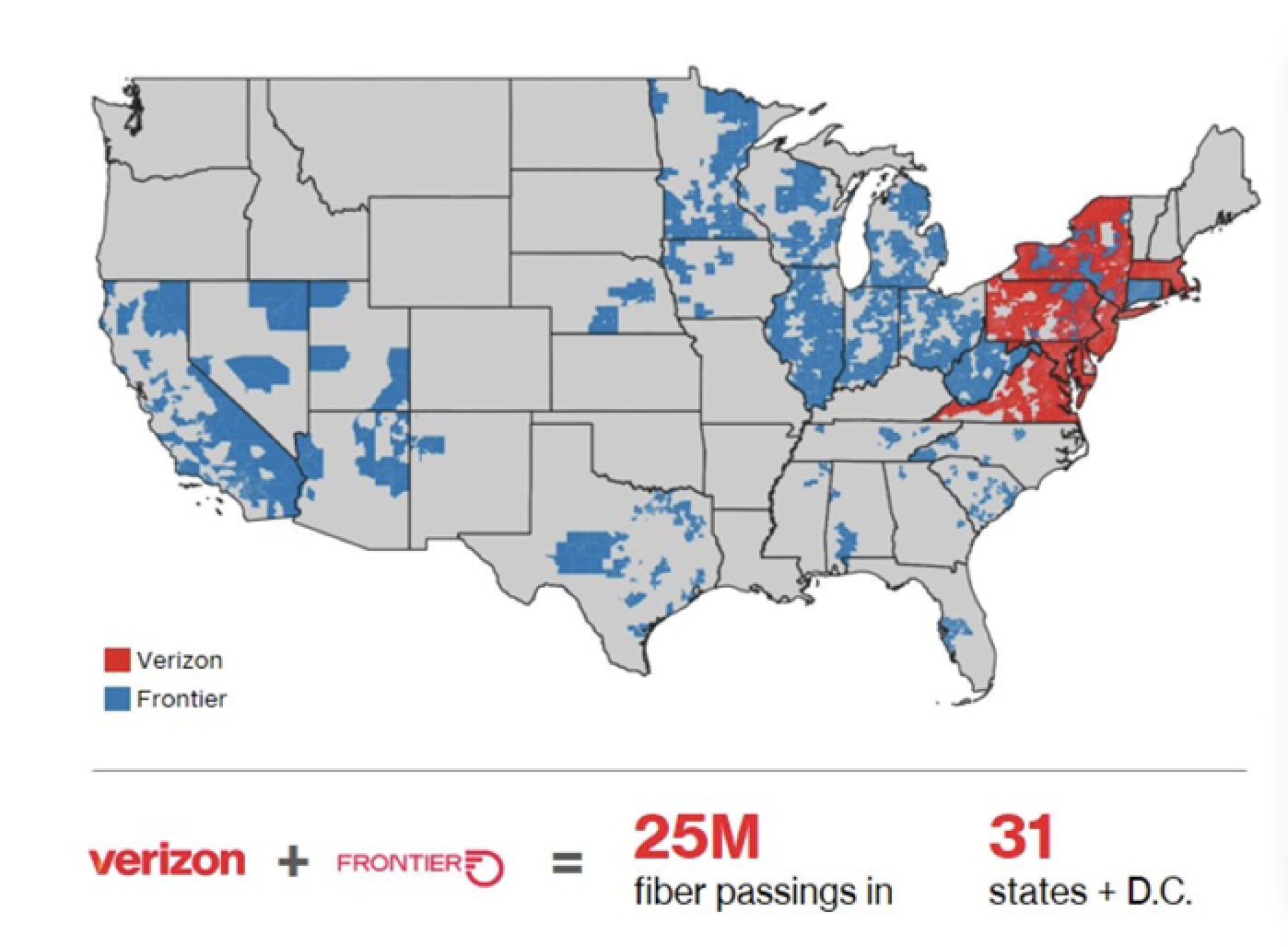Verizon to expand fiber footprint with $20 billion Frontier acquisition

Owner’s economics guide Verizon fiber plans; combining mobility and broadband drive network convergence strategy
At the Bank of American 2024 Media, Communications and Entertainment Conference yesterday, Sept. 4, BoA’s David Barden tried mightily to get Verizon’s Sowmyanarayan Sampath, president and CEO of the Consumer Group, to tip his hand on a rumored acquisition of Frontier, but Sampath wouldn’t budget. Cut to this morning, Sept. 5, and Verizon announced it plans to drop $20 billion in cash on Frontier, expanding its fiber footprint to 25 million premises across 31 states and Washington D.C. and picking up 2.2 million Frontier customers.
Verizon CEO Hans Vestberg, on a conference call this morning, made the case for the acquisition along four vectors: it expands Verizon’s addressable market and accelerates offerings of premium broadband and mobility to more customers; it extends Verizon’s products to Frontier’s customers; it further differentiates Verizon’s product mix; and it brings improved scale and distribution.
“It will also power Verizon’s intelligent edge network for digital innovation like AI and IoT,” Vestberg said. “It’s important to note that everything we’re talking about today is 100% aligned with our core strategy—to grow connections and value of customer relationships at the highest return on investment. And it’s aligned toward three financial pillars: grow service revenue, expand EBIDTA and free cash flow.”
“With Frontier’s fiber added to our portfolio, we are the only carrier that will have both size and scale in both fiber and fixed wireless access,” Vestberg said.
The deal will require a vote of Frontier shareholders and standard regulatory approvals. Verizon said it expects to close in approximately 18 months.
Fiber, fixed wireless access and mobility give Verizon a “winning hand”
The day before the deal was announced, Sampath sat for an interview at the Bank of America conference. Updating on Verizon’s 5G-backed fixed wireless access (FWA) service, he said the operator is closing to hitting the 4 million subscriber mark, and is seeing a $500 million quarterly run rate, so “It’s north of a $2 billion business for us already and growing significantly faster as well.”
He continued: “The demand for home and mobility has never been higher and we are a premium provider of both, so let me break down how we think about it. Look, we have the largest share in the postpaid mobility space, also a premium share position that we’ve built over the last couple of years. On broadband, for us, on one side, we have FWA…The FWA product is incredibly robust, very high NPS, very good ARPU, growing ARPU in that space. Customers really like it, and we keep expanding that and we have a lot more capacity in that space.”
“On the right side, we have our fiber product, which is our Fios. I think, this week, we celebrate our 20th anniversary of Fios, so big occasion for us there. And we keep adding between 400,000 and 500,000 every year…Customers buy it. So, we have an offering for both sides of the market.”
Sampath called out the relationship between bundling fiber with mobility and 50% reduction in mobility churn and 40% reduction in fiber churn. “With FWA, we see slightly lower numbers but a similar pattern…So we are seeing convergence play out the way we want to…It is accretive to revenue, and it’s a really good value prop for us in the longer term. So we think we actually have a winning hand.”

Comments are closed.